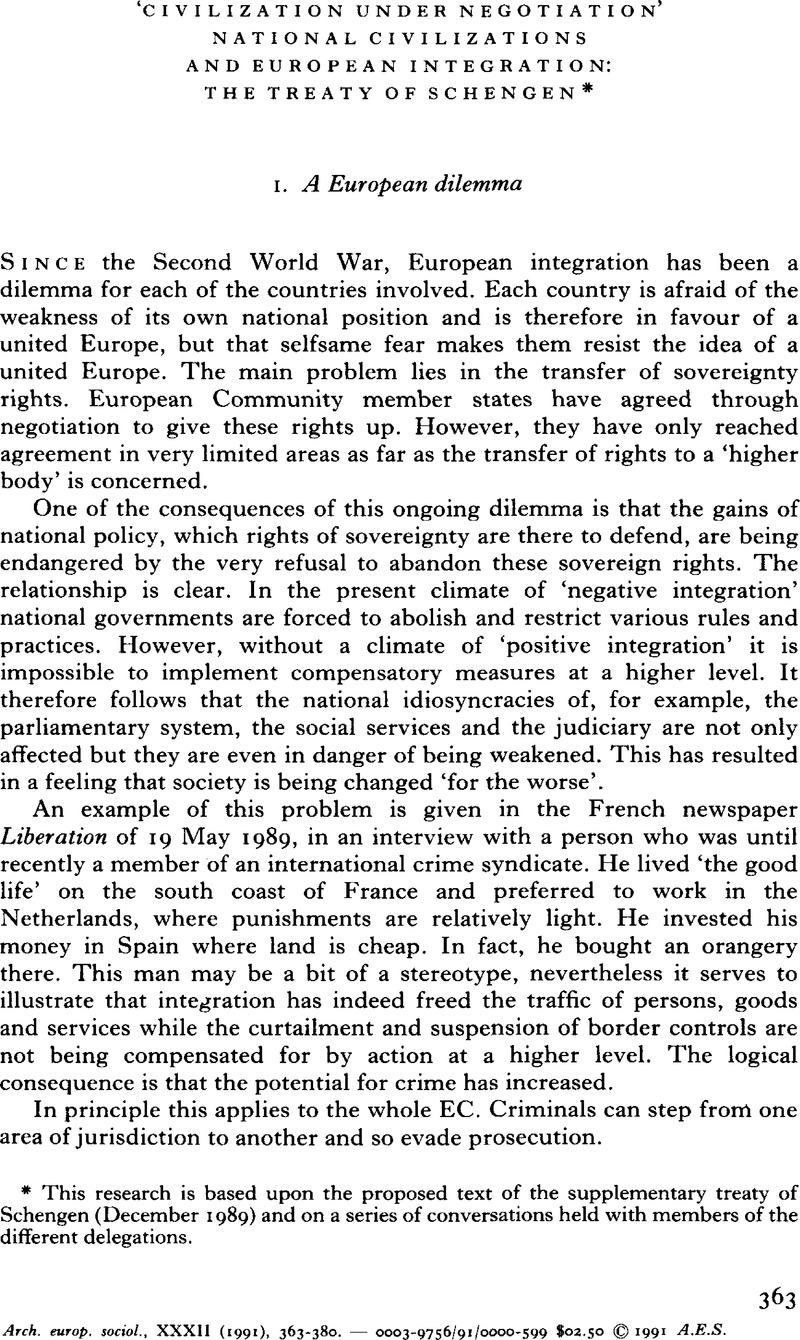Published online by Cambridge University Press: 28 July 2009

(1) Here an attempt is being made to use Norbert Elias's civilization theory on the development of self-control in relation to the development of judicial control. The similarities are striking if one notes the use of terms such as ‘scope’, ‘restraint’, ‘flexibility’ and the expression ‘controlled restrained application of controls’.
(2) See for national differences: Flora, Peter and Heidenheimer, Arnold, The development of the welfare states in Europe and America (New Brunswick 1981)Google Scholar; Kaeble, Hartmut, Auf dem weg zu einer europaischen gezellschaft (Munich 1987)Google Scholar; Wilterdink, Nico, Vermogensverhoudingen in Nederland (Comparisons of wealth in the Netherlands) (Amsterdam 1984)Google Scholar; Een internationale vergelijking van de minimumlonen, de inkomensverdeling en de minimunuitkeringen (An international comparison of minimum wages, the distribution of income and social security), Ministry of Social Affairs and Employment (The Hague 1989)Google Scholar.
Despite all the difficulties of international comparisons it can be said that, if one takes into account income, wealth, education and social security, social inequality in the Netherlands is relatively small.
For further information on judicial control see: Kapteyn, PaulWinkeldiefstal in Europees perspectief (Shoplifting in a European context) (Arnhem 1989)Google Scholar; De politiediensten in Belgie (The police services in Belgium) (TC Team consult, 1987).
The Dutch police force is proportionally about two thirds of the size of the other countries.
(3) See Veerman, G.J. et al. , Ik zal eens vragen naar zijn naam: voor- en nadelen van een legitimatieplicht (Let ask his name: the advantages and disadvantages of carrying identification) (Arnhem 1989)Google Scholar.
(4) For the relative success of Dutch drugs policies see: Swierstra, K., Drugscarrieres (Careers in drugs) (Groningen 1990)Google Scholar, and van de Wijngaart, G. F., Competing perspectives on drug use (Utrecht 1990)Google Scholar.
(5) Compare: Ned. Juristenblad, Speciaal (The Dutch journal of legal affairs), no. 23 (1989), a special issue devoted to Europe in 1992. See also: Report on European parliamentary sessions 1986–1987, doc. no. A2–227/86.
(6) Compare: Olson, Mancur, The Logic of Collective Action (Cambridge, Mass. 1965)Google Scholar. Compare: van Benthem van den Bergh, Godfried, The taming of the great powers (Oxford 1989)Google Scholar and Elias, Norbert, The Civilising Process, 2 vols (Oxford 1982) (German original, 1939)Google Scholar.
* I thank Mr. J. Peek, Ministry of Justice, Department of Police.